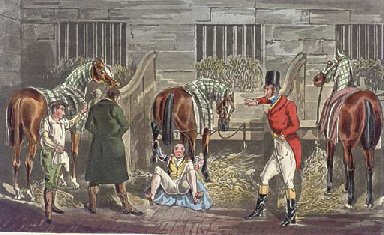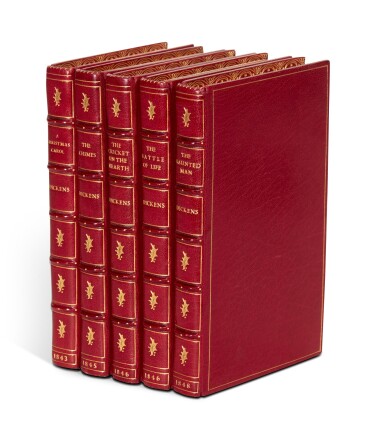Daniel Maclise (1806-1870) Design for Cork Art Exhibition Medal, 1852, sepia ink on paper, Inscribed “Daniel Maclise Design for Cork Art Exhibition Medal 1852” Depicting an allegorical figure of Hope reaching out to assist Hibernia, this sepia drawing by Daniel Maclise is a significant work of art by the most successful painter to have emerged from Ireland in the nineteenth century. It is also a record of a key event in Cork’s economic and social history. The inscription records that the drawing was submitted by Maclise as a design for a medal to commemorate the Cork Exhibition of 1852. Promoted by John Francis Maguire, the first “Irish Industrial Exhibition” was intended to compensate for the low representation of Irish goods at the Great Exhibition held in London the previous year, and also to boost the economy in a part of Ireland badly affected by the Great Famine. In his Dictionary of Irish Artists, (Vol II, p.562) Walter Strickland mentions two medals struck by William Woodhouse (1805-1878) commemorating the Cork Exhibition; both were designed by Maclise. The first was for the overall exhibition, while the second, for which this is the preparatory drawing, included figures of Hope and Hibernia, and was for the opening of the Fine Art section of the exhibition. Displayed in the Fine Art Hall, in the southern transept of the main exhibition building, were paintings and sculptures by Irish artists, including Stephen Catterson Smith George Petrie Frederick William Burton Francis Danby John Henry Foley and Michelangelo Hayes. The architect John Benson received a knighthood for designing the huge building that housed the Cork Exhibition. Originally sited near City Hall, this wooden structure was later dismantled and the Fine Art Hall was re-erected as the “Athenaeum” theatre, alongside the old Custom House. It served well for over a century as the Cork Opera House, but was destroyed by fire in the late 1950’s. Born in Cork in 1806, Daniel Maclise was a student at the School of Art established in that city while he was still a young teenager. He went on to study at the Royal Academy Schools in London, where he was an award-winning student. His history paintings were often inspired by literary works, such as the plays of Shakespeare, and he produced many designs for engravings in works of literature, such as Tom Moore’s Irish Melodies, the poems of Alfred Tennyson, and woodcuts for the ‘Christmas books’ of Charles Dickens Many of Maclise’s friendships centred on the periodical Fraser’s Magazine, for which he produced dozens of lithographed portraits of leading writers and politicians. However, the high point of his career was reached in the mid-1840’s, when he was commissioned to paint murals for the Houses of Parliament. One of these works, The Marraige of Strongbow and Aoife (1854) is now in the National Gallery of Ireland, but the two largest works, The Meeting of Wellington and Blücher (1861) and The Death of Nelson (1865) are in the Royal Gallery in the House of Lords. After the death of Prince Albert, Maclise discontinued his work in the Houses of Parliament. Although he strove for, and achieved, success, when Maclise was offered the presidency of the Royal Academy, he refused, and he refused also the offer of a knighthood. Dr. Peter Murray, 2022
Daniel Maclise (1806-1870) Design for Cork Art Exhibition Medal, 1852, sepia ink on paper, Inscribed “Daniel Maclise Design for Cork Art Exhibition Medal 1852” Depicting an allegorical figure of Hope reaching out to assist Hibernia, this sepia drawing by Daniel Maclise is a significant work of art by the most successful painter to have emerged from Ireland in the nineteenth century. It is also a record of a key event in Cork’s economic and social history. The inscription records that the drawing was submitted by Maclise as a design for a medal to commemorate the Cork Exhibition of 1852. Promoted by John Francis Maguire, the first “Irish Industrial Exhibition” was intended to compensate for the low representation of Irish goods at the Great Exhibition held in London the previous year, and also to boost the economy in a part of Ireland badly affected by the Great Famine. In his Dictionary of Irish Artists, (Vol II, p.562) Walter Strickland mentions two medals struck by William Woodhouse (1805-1878) commemorating the Cork Exhibition; both were designed by Maclise. The first was for the overall exhibition, while the second, for which this is the preparatory drawing, included figures of Hope and Hibernia, and was for the opening of the Fine Art section of the exhibition. Displayed in the Fine Art Hall, in the southern transept of the main exhibition building, were paintings and sculptures by Irish artists, including Stephen Catterson Smith George Petrie Frederick William Burton Francis Danby John Henry Foley and Michelangelo Hayes. The architect John Benson received a knighthood for designing the huge building that housed the Cork Exhibition. Originally sited near City Hall, this wooden structure was later dismantled and the Fine Art Hall was re-erected as the “Athenaeum” theatre, alongside the old Custom House. It served well for over a century as the Cork Opera House, but was destroyed by fire in the late 1950’s. Born in Cork in 1806, Daniel Maclise was a student at the School of Art established in that city while he was still a young teenager. He went on to study at the Royal Academy Schools in London, where he was an award-winning student. His history paintings were often inspired by literary works, such as the plays of Shakespeare, and he produced many designs for engravings in works of literature, such as Tom Moore’s Irish Melodies, the poems of Alfred Tennyson, and woodcuts for the ‘Christmas books’ of Charles Dickens Many of Maclise’s friendships centred on the periodical Fraser’s Magazine, for which he produced dozens of lithographed portraits of leading writers and politicians. However, the high point of his career was reached in the mid-1840’s, when he was commissioned to paint murals for the Houses of Parliament. One of these works, The Marraige of Strongbow and Aoife (1854) is now in the National Gallery of Ireland, but the two largest works, The Meeting of Wellington and Blücher (1861) and The Death of Nelson (1865) are in the Royal Gallery in the House of Lords. After the death of Prince Albert, Maclise discontinued his work in the Houses of Parliament. Although he strove for, and achieved, success, when Maclise was offered the presidency of the Royal Academy, he refused, and he refused also the offer of a knighthood. Dr. Peter Murray, 2022







Try LotSearch and its premium features for 7 days - without any costs!
Be notified automatically about new items in upcoming auctions.
Create an alert